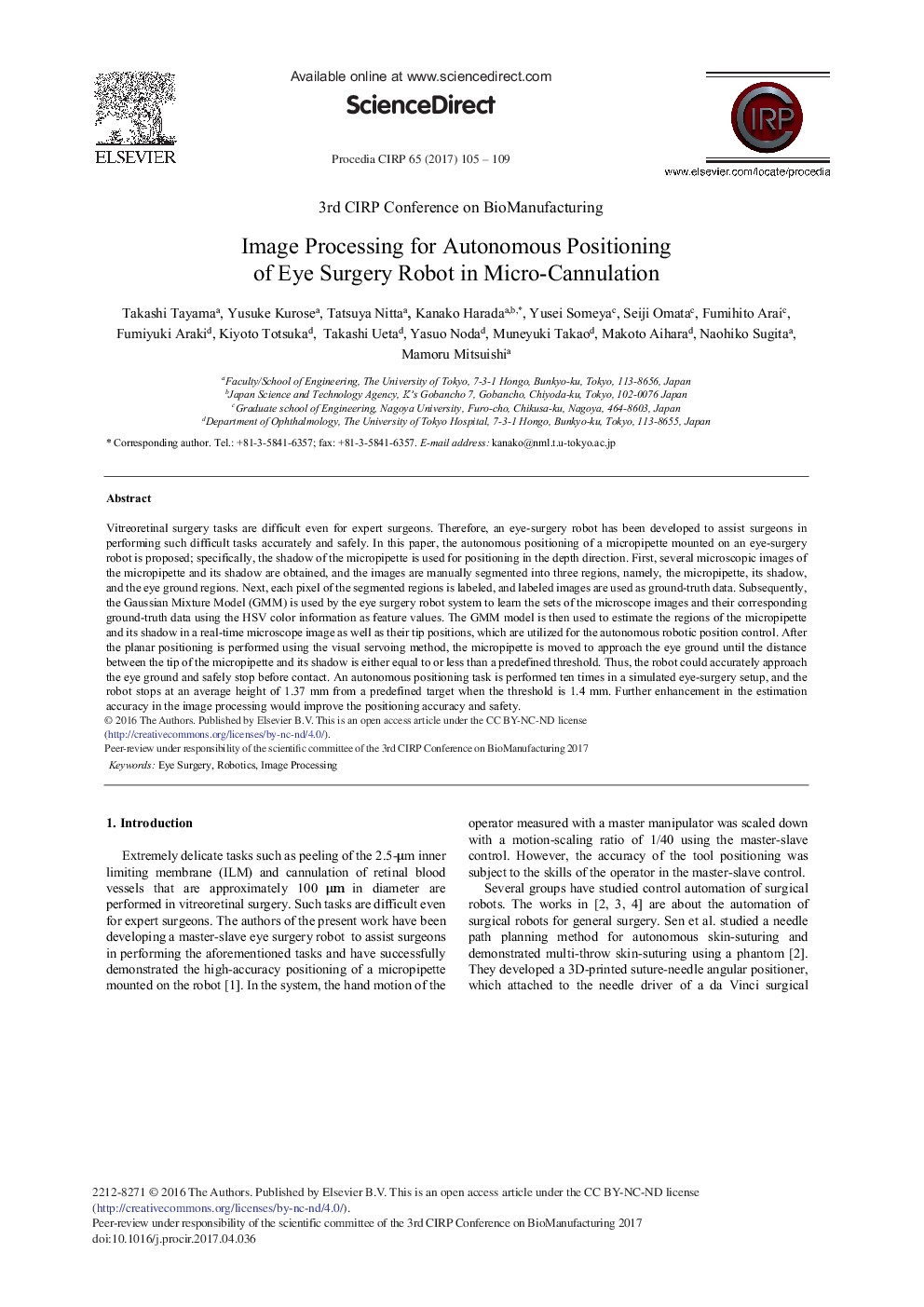ترجمه فارسی عنوان مقاله
پردازش تصویر برای تعیین موقعیت خودکار ربات جراحی چشم در میکرو کانولاسیون
عنوان انگلیسی
Image Processing for Autonomous Positioning of Eye Surgery Robot in Micro-Cannulation
| کد مقاله | سال انتشار | تعداد صفحات مقاله انگلیسی |
|---|---|---|
| 152300 | 2017 | 5 صفحه PDF |
منبع

Publisher : Elsevier - Science Direct (الزویر - ساینس دایرکت)
Journal : Procedia CIRP, Volume 65, 2017, Pages 105-109
ترجمه کلمات کلیدی
جراحی چشم، روباتیک، پردازش تصویر،
کلمات کلیدی انگلیسی
Eye Surgery; Robotics; Image Processing;

